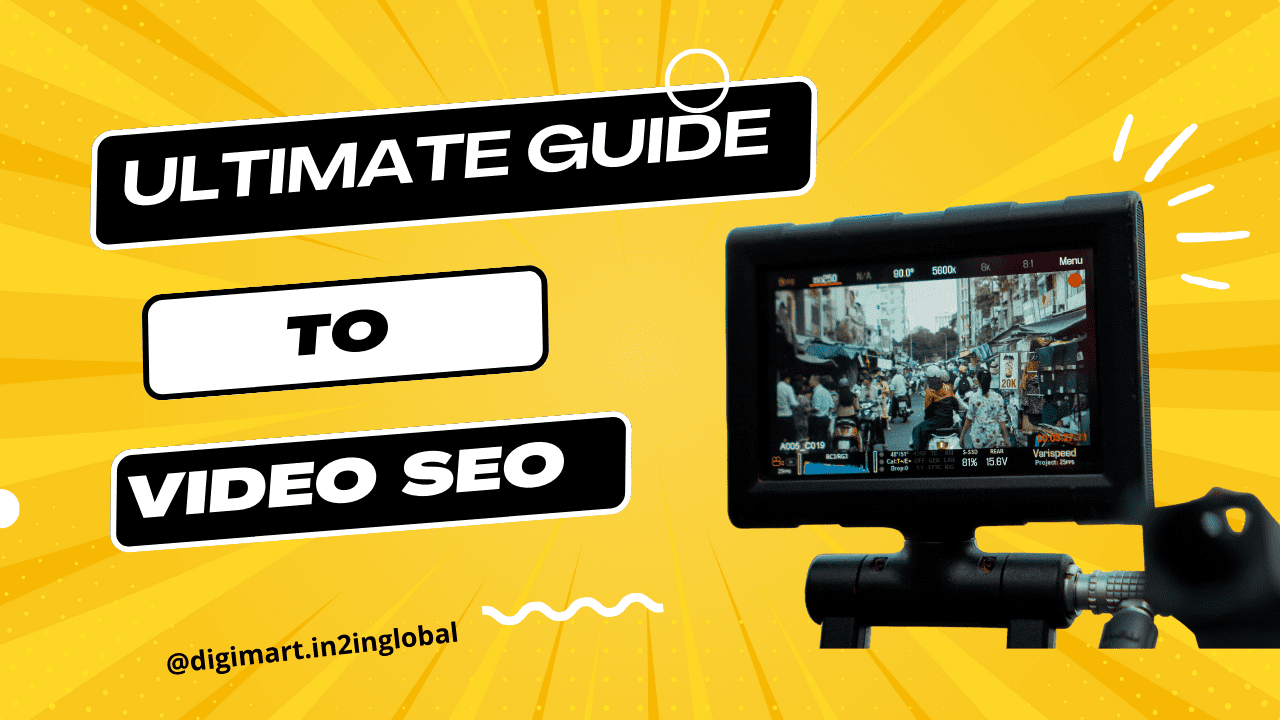
9, Oct 2023
How to Create Videos for Search Engines to Boost Visibility

Are you ready to take your video content to new heights and ensure its visibility across the vast digital landscape? Look no further, as we unveil the ultimate guide to Videos for Search Engines! In this comprehensive handbook, we will equip you with all the essential tools and techniques needed to optimize your videos for search engines.
From unraveling the mysteries of metadata and keyword research to unlocking the secrets of thumbnail optimization, get ready to skyrocket your video rankings and capture the attention of audiences far and wide.
So grab a pen, buckle up, and let’s embark on an adventure that will transform your videos into undisputed champions in search engine results pages!
Introduction to Videos for Search Engine and Its Benefits
If you’re not using video as part of your SEO strategy, you’re missing out. Video is a powerful tool that can help you rank higher in search engine results pages (SERPs), drive traffic to your website, and boost engagement.
What is video SEO? Video SEO is the process of optimizing your videos for search engines. Just like with traditional SEO, this process includes optimizing your video title, description, tags, and thumbnail for relevant keywords.
Why should you bother with video SEO? Because it can help you achieve all of the following:
- Improved SERP rankings: A well-optimized video can help your website rank higher in SERPs, driving more traffic to your site.
- More website visitors: More traffic means more potential customers or clients visiting your site.
- Increased engagement: Videos are more engaging than text alone, so adding videos to your website can keep visitors on your site longer. This can lead to improved conversions and sales.
Ready to get started with Videos for Search Engines? Here’s what you need to know.
- Research relevant keywords: Before you start optimizing your videos, you need to know which keywords are most relevant to your target audience. Use Google Keyword Planner or other keyword research tools to identify the best keywords for your video content.
- Create optimized video titles and descriptions: Once you’ve identified relevant keywords, use them in your video titles and descriptions. Make sure that your titles and descriptions accurately describe the content of the video, while also including the targeted keywords.
- Utilize tags: Tags are another important component of video SEO because they tell search engine crawlers what the video is about. Choose tags that are related to the topic of the video and include some of your chosen keywords.
- Optimize thumbnails: Thumbnails are an important part of a successful SEO strategy because they help viewers identify which videos they want to watch. Choose thumbnails that accurately represent the content of each video and include a catchy title or phrase, such as “Learn How To…”
By following these steps, you can make sure that your videos are properly optimized for search engine crawlers and more likely to turn up in SERPs when someone searches for relevant terms.
Key Elements of Effective Videos for Search Engines
There are a few key elements to effective video SEO. First, you need to have great title tags that accurately describe your video content. Secondly, you need to have transcripts of your videos so that search engines can index the spoken word and make your video more searchable. You need to host your videos on a platform that is easily crawl able by search engine bots.
If you want your videos to be found by potential viewers, then you need to optimize them for search engines. This means using the right keywords in your title tags and transcripts, as well as hosting your videos on a platform that is easily indexed by search engine bots. By taking these steps, you can ensure that your videos are more likely to show up in search results, driving traffic to your website or blog.
Tips for Optimizing Your Videos for Search Engines
- Make sure your videos are well-optimized for search engines. This means using the right keywords and tagging your videos properly.
- Use transcripts of your videos to help improve their search engine rankings.
- Promote your videos on social media and other websites to help them reach a larger audience.
- Make sure your videos are mobile-friendly so people can watch them on the go.
- Use descriptive titles and descriptions for your videos to help people find them more easily.
- Try to get links from high-quality websites to point to your videos. This will help improve their search engine ranking even further.
Tools for Improving Your Videos for Search Engines Performance
There are a number of tools you can use to improve your video SEO performance. Here are just a few:
- Google’s Keyword Planner: This tool allows you to research keywords and get ideas for new keywords to target.
- YouTube Analytics: This tool lets you track your video views, watch time, and other engagement metrics. You can use this data to optimize your videos for better performance.
- VidIQ: This is a paid tool that provides insights into how your videos are performing on YouTube and what you can do to improve them.
- Wistia: Wistia is a video hosting platform that also offers some great video SEO features, like transcripts and customizable player colors.
- BuzzSumo: Use this tool to see which videos are performing well on social media so you can replicate that success with your own videos.
Strategies for Getting More Views on YouTube
As the second most popular website in the world, YouTube receives over one billion unique visitors every month. That’s a lot of eyeballs, and if you can get even a small fraction of those viewers to watch your videos, you’ll see a significant increase in your traffic.
There are a number of strategies you can use to get more views on YouTube. Some are simple and only take a few minutes to implement, while others require a bit more effort but can have a big impact.
Here are some strategies for getting more views on YouTube:
Optimize Your Video Title and Description
Just like with regular SEO, your video title and description are important for ranking in YouTube search results. Include relevant keywords in both your title and description, and make sure that your description is compelling enough to entice people to click through to your video.
Create Engaging Thumbnails
Your thumbnail is what appears in the search results next to your video title, so it needs to be eye-catching and relevant to the content of your video. If possible, include text on your thumbnail image as this can help improve your click-through rate.
Use Keywords in Your Tags
YouTube allows you to add up to 500 characters of tags to each video you upload. These tags help YouTube understand what your video is about so they can surface it in relevant searches. Be sure to include a mix of both general and specific keywords so that your video can be found by a wide range of viewers.
Promote Your Videos on Social Media
Take advantage of the large reach of social media platforms like Facebook, Twitter, and Instagram to promote your videos. You can easily share a link to your YouTube video on any of these networks and get more eyeballs on your content.
Create Playlists
When you create playlists in YouTube, you’re creating an easy way for viewers to find more related content from you. This encourages people to stick around longer and potentially watch more of your videos, which will increase the overall views for your channel.
Collaborate with Other Creators
Partnering up with other creators is a great way to get more views on YouTube. Reach out to channels with similar audiences or topics as yours and collaborate by doing joint videos or cross-promoting each other’s content. This will help bring new viewers to both of your channels without having to do all the promotion yourself.
How to Track and Measure Success of Your Videos for Search Engines Campaigns?
There are a number of ways to track and measure the success of your video SEO campaigns. One way is to track the number of views and engagement that your videos receive. You can also track how well your videos rank in search engines for key keywords and phrases. Additionally, you can measure the amount of traffic that your videos drive to your website or blog.
Conclusion
Videos for Search Engines is an incredibly powerful tool for increasing your website’s visibility and reach in search engine results. By optimizing the technical aspects of your videos, taking advantage of YouTube’s advanced features, and leveraging social media channels to increase promotion, you can create a successful video SEO campaign that will help drive more traffic and conversions for your business.
With the right strategy in place, you can make sure that your videos are seen by as many people as possible.
- 0
- By info






